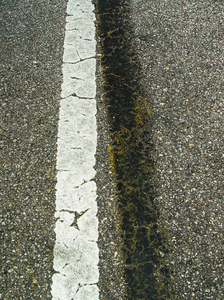A 24-year-old from Lawrence man was fighting for his life in Beth Israel Hospital in Boston after being hit by a pickup driven by a 21-year-old from Kensington. According to The Salem News, the young driver was charged with drunk driving.

The pedestrian, at Warren and Haverhill streets, was tossed about 20 feet in the air and sent about 100 feet after being hit by the pickup just after 9:00 p.m. Hospital reports indicate that the pedestrian was in “extremely critical condition”, suffering from serious head injuries and brain swelling.
According to officers, they smelled both urine and alcohol on the driver when they spoke with him after the Lawrence pedestrian accident. The driver explained that he had two beers in Haverhill while at Hans Harden. According to the sobriety tests, it was determined that the young driver had a BAC of .17, more than twice the legal limit.
The man was not only arrested for drinking and driving, but he was also charged with drunken driving resulting in an accident with serious bodily injury as well as negligent operation. If officials decide to try this on a district court level, then he could face a minimum of six months behind bars. If he’s indicted on the charges, he could face 2 1/2 years behind bars.
Many people think that drunk driving is just that — drunk driving. But with the higher the BAC, the higher the risks for a serious, and even fatal accident. When a driver gets behind the wheel with a .13 to a .15 BAC, they face gross motor impairment and lack of physical control. They’re also suffering from seriously blurred vision and major loss of balance. Euphoria is reduced and dysphoria (anxiety, restlessness) is beginning to appear. Judgment and perception are severely impaired as well. When a driver hits the levels of .16 to .18, Dysphoria predominates and nausea may appear. At this point, the drinker has the appearance of a “sloppy drunk.”
Still, neither BAC, nor the number of drinks consumed, are necessarily accurate indicators of the level of impairment. Tolerance to alcohol also varies from one person to another, and can be affected by such factors as genetics, adaptation to chronic alcohol use, and synergistic effects of drugs.
Women become intoxicated more quickly than men, even when body weights are the same. There are three likely explanations for this fact.
Some people think that they can sober up quickly by eating, drinking black coffee, sleeping, taking a cold shower, or running around the block. The fact is that none of these strategies sober up a drunk person faster. Nothing sobers someone up except time — lots of time. Nothing the person does during that time will speed up the process. All that matters is that several hours go by.
In addition, binge drinking can impair judgment and increase student risk for harassment, unintended sexual activity, vandalism, violent behavior, and poor academic performance. The ramifications of these negative behaviors often extend to the surrounding community.
Call Jeffrey Glassman Injury Lawyers for a free and confidential appointment — (617) 777-7777.
More Blog Entries:
Preventing College Campus Pedestrian Accidents, Boston Car Accident Lawyer Blog, October 13, 2013
MADD Survey Suggests Progress – Teen DUI Accidents Still a Risk, Boston Car Accident Lawyer Blog, November 11, 2013
 Boston Car Accident Lawyer Blog
Boston Car Accident Lawyer Blog

